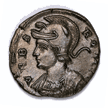Grading Guides
Learn the grades of Ancient Coins
Ancient Coin Grading Guide
Here's where you'll find visual tips and information about identifying the grades of the coins and paper money in your collection. Use the handy images provided to compare to your own.
The standards for grading ancient coins that are struck by hand are different from those used to grade modern, machine-struck coinage. Because ancient coins are hand struck and have been buried, dug up and cleaned, each coin has a unique combination of attributes (patina, strike, centering, degree of corrosion, etc.). Accordingly, grading ancient coins is more of an art than a science. The standards for grading these coins are not as technical as those for modern coinage and can vary widely from type to type and even coin to coin. Some ancient coins that have no circulation wear and may be considered Mint State have other defects from striking or burial, which lower the overall grade. This is known as net grading.
Many factors must be taken into account when grading ancient coins, including: quality of the strike(s), state of the die at striking, quality of the metal used for the planchet, wear from circulation, and effects of burial and conservation. Even historical factors must be considered. For example, a Roman coin of the Golden Age (A.D. 96-161) can normally be expected to be better struck than a Roman coin of the 3rd Century A.D. when the empire was very unstable. Coins of usurpers such as Procopius (A.D. 365-366) and Carausius (A.D. 287-293) were often struck by portable mints, traveling with the army. These coins are often irregular due to the haste in which they were struck. It is normal to expect that any given ancient coin has been cleaned at one time to remove soil, encrustation, and mineral deposits.
The grading standards listed below are general guidelines. We also use ‘Plus’ (VF+, F+ etc.) and ‘About’ to more precisely define the grade when necessary.
Good
Coin may have less than 30% of original inscription and design visible. Coin can be attributed as to ruler and type.
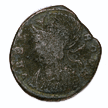
Very Good
Coin may have more than 30% of original inscription and design. Major planchet defects (e.g. pitting, cracks, irregularly shaped flan) are common in this grade.
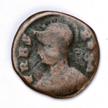
Fine
Coin has at least 50% of original inscription and almost all of original design. Major planchet defects may be evident.
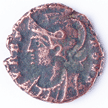
Very Fine
All detail should be visible with some wear on the high points. Minor planchet defects may be evident.
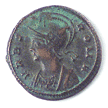
Extremely Fine
Little wear is visible except on very highest portions of the coin design. Coin is well centered with few if any planchet defects. At least 90% of inscription is legible.
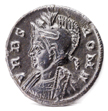
Mint State
Coin has no visible wear from circulation. Coin may be toned.
